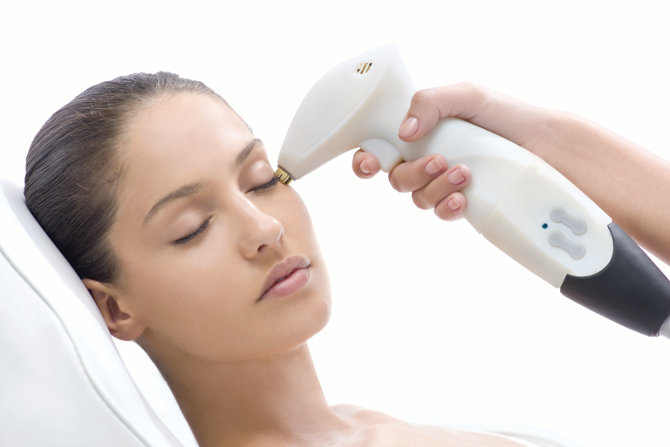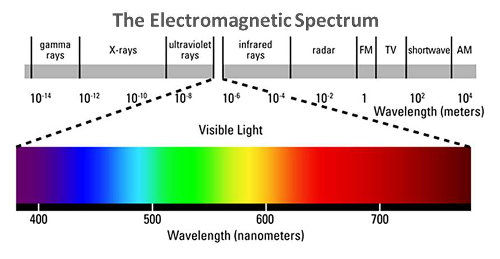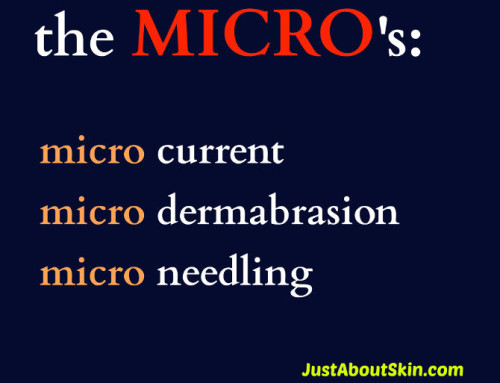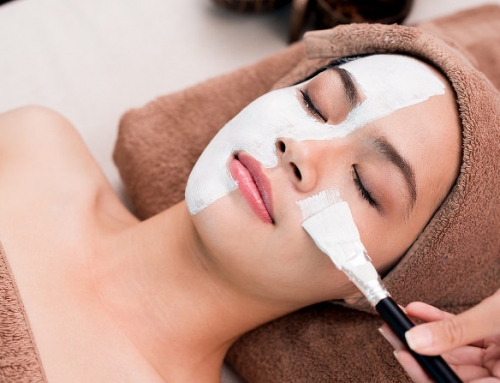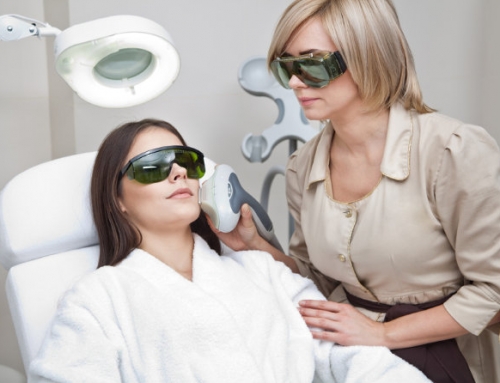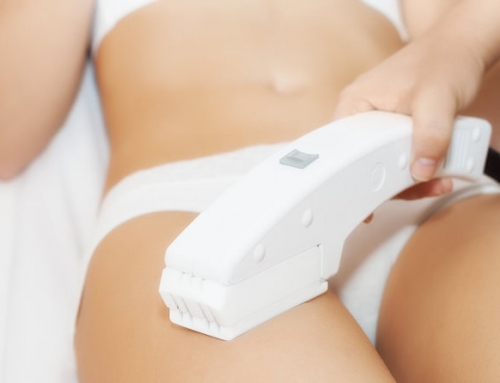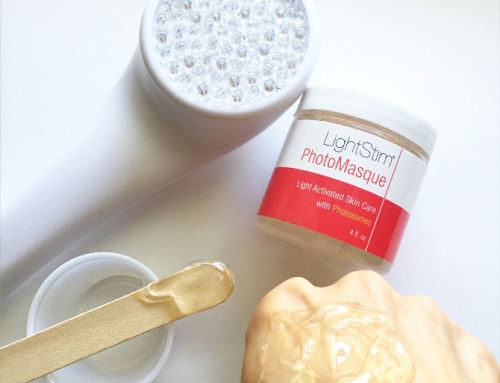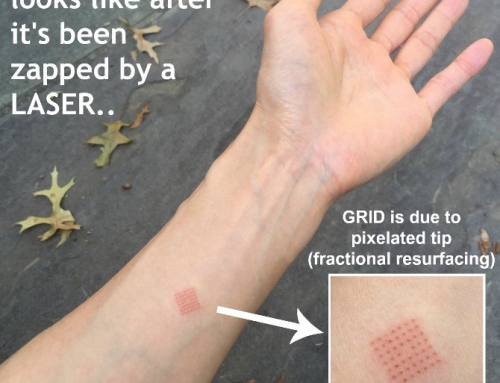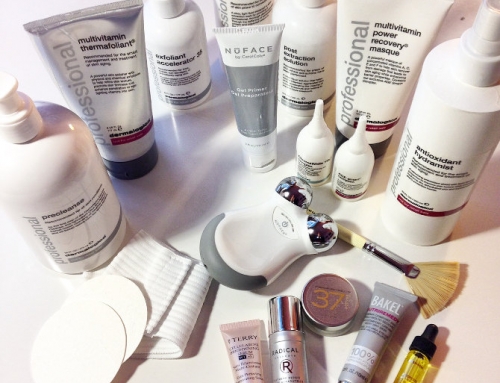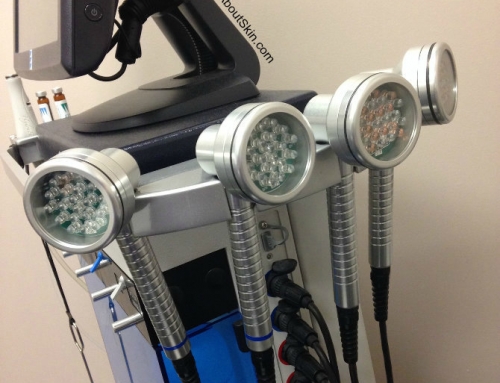Light devices are very confusing. I think that’s partly because they appear to do more or less the same thing, if you believe all the marketing claims! And perhaps it’s because light physics isn’t an easy subject to grasp.
Know the difference between IPL and laser? Most people don’t, and even professionals think they’re the same. They’re actually quite different, in terms of what they can do to your skin and their associated risks.
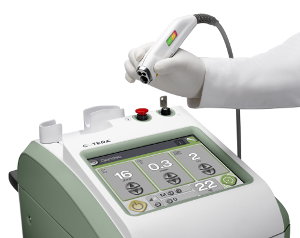 I received many questions back when I wrote about my LightStim home LED light tool and recently when I showed a picture of my skin zapped by a laser.
I received many questions back when I wrote about my LightStim home LED light tool and recently when I showed a picture of my skin zapped by a laser.
There’s a lot of confusion over what these devices are used for and how they stack up against one other.
Why is one type of device preferred over another? When do you buy a consumer handheld device to use at home by yourself, and when do you visit the dermatologist for a more invasive light treatment? Is it worth buying a home light device? Is it worth making a trip to the dermatologist if you have X, Y, or Z?
This is a hefty topic! It can’t be covered in one article. I will try to help you answer these questions over time. But first, I think what would be helpful is to lay out some basic background before diving into the pros and cons of different treatments. That way, you will be better prepared to ask the right questions and have more realistic expectations.
So today’s article will cover what light actually does to skin. I will also compare IPL vs laser, because they are popular options that you will encounter in medical offices and medical spas.
Another popular light treatment is LED, which you can read about here: An Intro to LED Light Therapy.
What Does Light Do For Skin?
Why are light devices used to improve the appearance of skin? What is it about light that makes it possible to remove excess hair, unwanted pigmentation, wrinkles, and even fat? These are such different issues, how can light do all of this?
Light is a form of energy. For example, the light energy from sunlight powers photosynthesis in plants, which becomes a source of energy to us when we consume it as food.
Light energy can be directed at skin too. Different types of light do different things to skin.
Some types of light energy are highly destructive to skin. The ones with the shorter wavelengths (gamma rays, X-rays, UV rays) are the most harmful. They produce a type of radiation, ionizing radiation, that can alter DNA and damage the deeper layers of skin.
The sunlight that reaches Earth, which is composed of UVA and UVB rays, is a type of ionizing radiation that causes the familiar sunburn as well as the typical signs of skin aging (wrinkles, sagging, spots) and skin cancer.
Some forms of light are therapeutic and healing to skin (e.g. red visible light used in LED light therapy).
And some forms of light selectively remove things in skin that we don’t want (e.g. infrared light and parts of the visible light spectrum).
Let’s look at what light can do for skin in a medical esthetics setting.
Light Is Attracted To Chemical Targets In Skin
Light devices function as sources of light. They emit light energy.
Light energy is converted into thermal energy (HEAT) inside skin.
This thermal energy has different effects on skin:
- Heats up and destroys a specific target
- Activates a chemical in skin that destroys a target
- Stimulates something in skin (e.g. a fibroblast, which makes collagen & other dermal components; blood circulation)
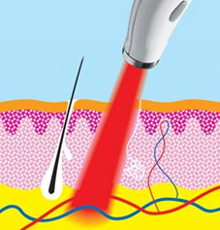 The goal of a light device, such as IPL or laser, is to direct light energy to chemical targets in skin.
The goal of a light device, such as IPL or laser, is to direct light energy to chemical targets in skin.
These targets are called chromophores. The light is attracted to these chromophores because they possess a certain color.
Examples of Targets:
- melanin (pigment in skin and hair)
- blood – specifically oxyhemoglobin (the protein in red blood cells that gives blood its red color)
- ink (in tattoos)
- water (in the dermis layer of skin)
- P. acnes bacteria (the porphyrin proteins that they form)
Light Targeting Can Treat A Variety Of Skin Issues
To reiterate, light is converted into heat once it hits a target in skin. This heat causes a reaction which ultimately helps achieve a certain goal.
So for example, targeting:
- melanin pigment – reduces hyperpigmentation (dark spots) and hair growth (the light destroys the pigment in the hair follicle)
- oxyhemoglobin – reduces redness and vascular lesions (e.g. visible capillaries, spider veins, varicose veins)
- ink – removes tattoos
- water – causes the removal of skin (at high heat, the water in skin boils, vaporizing skin)
- P. acnes bacteria – kills bacteria and reduces acne breakouts
The process of targeting chromophores in skin and selectively destroying them is called selective photothermolysis.
Reaching the intended target successfully depends on the wavelength of the light and the depth that it travels into skin.
The depth that light will travel depends on its wavelength and what it encounters along the way (is there anything blocking its path or slowing it down?).
- A wavelength is a measurement of light. Light devices are often labeled and called by their wavelength. For example, the Nd:YAG laser is sometimes called “1064” because its wavelength is 1064 nm.
- The “nm” is an abbreviation for nanometer, a measurement of distance. One nanometer equals one billionth of a meter. So it’s very, very, very small!
IPL and laser devices are designed with different wavelength settings. When you get an IPL or laser treatment, the physician or nurse must choose the most appropriate modality (what device?, what wavelength?, what energy level?) for your desired goal.
The choice of light settings is crucial for delivering the right amount of heat without destroying the surrounding tissue. If the wrong settings are chosen, things can go very wrong, such as burning the skin or causing too much injury to skin, which brings me to my next point..
Choose Your Provider Carefully
It’s very important that you obtain your light treatment from an experienced professional who is legally permitted to perform these kinds of procedures, and has enough training and experience to do it successfully. Knowing which IPL or laser settings to choose requires experience with many different patients – seeing what works and what doesn’t in different types of skin and situations.
The laws surrounding the operation of IPL and lasers vary widely. In the United States, each state has its own laws. The laws are also unclear and murky in many states. Who exactly is allowed to operate these machines? It’s still a gray area.
In a medical esthetics practice, you will typically encounter these types of professionals: physician, nurse, physician assistant, esthetician. In most states, only a physician or registered nurse is allowed to operate IPL and laser machines. You have to check with your own state.
Also, more and more physicians who didn’t specialize in dermatology or plastic surgery are offering light cosmetic procedures and operating IPL/laser machines. The choice is up to you as to what kind of doctor (specialist) you want performing your light treatment.
In my opinion, the most important consideration should be experience, and specifically volume. How many procedures (treatments) like this has this professional done before? The more the better. Ideally, you want someone who has done it many times. Just like you’d want the eye surgeon performing your cataract surgery to have done it many, many times before.
What Is IPL and Laser, And How Are They Different?
IPL and laser are Class 3 or 4 medical devices found in medical offices and medical spas. The class is a FDA classification that refers to how aggressive the device is and whether it requires a physician or nurse under the supervision of a doctor to operate it. In the U.S., there are 4 classes of medical devices.
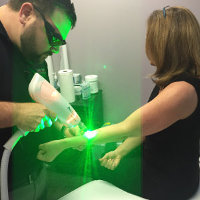 Because IPL and lasers are medical devices, you can’t buy them to use at home. They are only available as in-office treatments. The only light device you can buy as a consumer is a LED light therapy tool, which is the most gentle and least risky type of light treatment.
Because IPL and lasers are medical devices, you can’t buy them to use at home. They are only available as in-office treatments. The only light device you can buy as a consumer is a LED light therapy tool, which is the most gentle and least risky type of light treatment.
IPL stands for Intense Pulsed Light.
Laser is also an acronym. It stands for Light Amplification Stimulated Emission Radiation.
IPL and laser both emit light energy. The key difference between them is how.
LASER
When you think of a laser, what comes to mind? Do you remember Darth Vader or Luke Skywalker’s light saber in Star Wars? That’s a good example of a laser.
 A laser is a straight, focused, concentrated beam of light.
A laser is a straight, focused, concentrated beam of light.
The key word is beam. It’s one beam. That beam of light is just ONE WAVELENGTH of light. That means, it has only ONE COLOR.
A laser points at a small area. Think of a laser pointer used by a speaker in a slide presentation.
IPL (Intense Pulsed Light)
 Unlike a laser, IPL is NOT one beam of light. IPL consists of MULTIPLE WAVELENGTHS of light.
Unlike a laser, IPL is NOT one beam of light. IPL consists of MULTIPLE WAVELENGTHS of light.
IPL light shines over a larger area. Think of a flashlight. The light from a flashlight is broader and more diffuse.
Because the light is more spread out, IPL delivers LESS ENERGY than a laser. This makes IPL more gentle than lasers.
IPL treatments typically present no or little downtime. Lasers are much more invasive and therefore often require a little to a lot of downtime.
So why would you ever want to use a laser? Why not just get IPL? Because there are tradeoffs. The main tradeoff is how fast you want to see results. If you want instant gratification, faster results usually requires more downtime (and risks). Many people don’t want to spend a week or two with their face looking red or covered in dark spots or ugly sores.
So, while IPL may be more gentle, it requires a longer treatment period – typically, a series of treatments spaced 4-6 weeks apart.
Of course, the choice of IPL or laser will depend on your problem – many conditions can be treated by both. But one will usually be better than the other, depending on the color of your skin (Fitzpatrick skin type), the nature and severity of your problem, your time horizon, how much downtime is acceptable to you, and your tolerance for pain.
A laser can also travel deeper into skin than IPL. So certain goals (resurfacing skin, removing dermal pigment) can only be done by a laser.
If you’ve made it this far, hopefully you have a better idea of how light can change skin. There’s a lot more to cover, but it’ll be easier to digest if I break it up into future posts. I think this is enough for today!
Next time, I will go into more detail about what conditions can be treated by IPL and laser treatments.
Related Posts:
Want articles & posts delivered straight to your inbox? Sign up for the weekly newsletter here.

